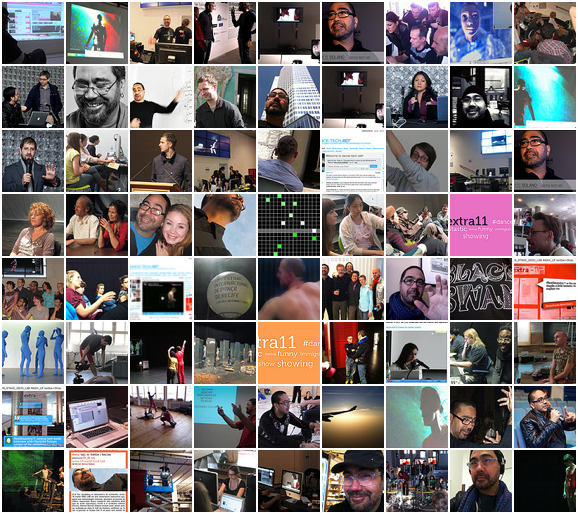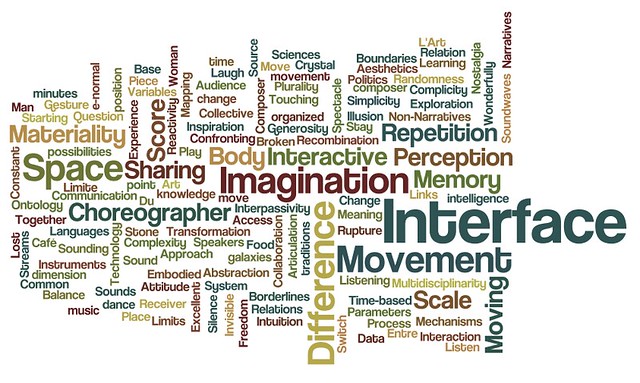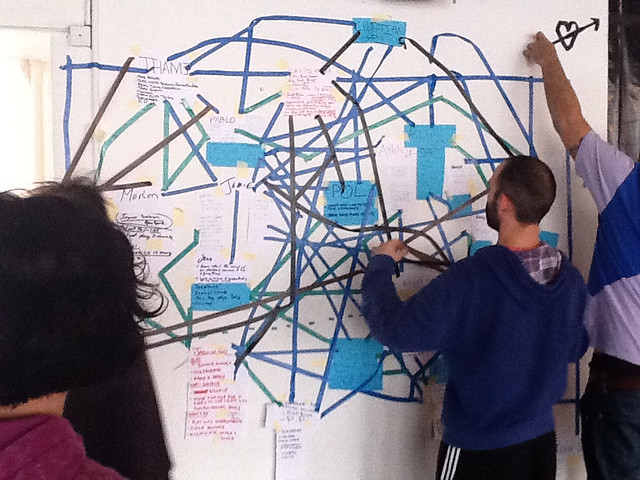on-line producer/curator/researcher/workshop leader
dance and new media/networked media production/collaborative technologies

I offer consulting, lectures and facilitation of workshop as participatory platforms for knowledge sharing and change with an embodied improvisational approach.
I like to share my experience on:
- On-online/off-line collaborative technologies/methods
- Social media and hyper-media for artists and cultural managers
- Movement arts and new media (dance and technology).
- Networked/collaborative creativity and interactive tools for knowledge production, generation and distribution
- Open Space technologies and interactive learning for collaboration and innovation
- Performance, communication and sustainability
- Post-pc technologies for collaboration and creation
- Collaborative spaces and networks for/in the performing arts
I facilitate the materialization of social dynamics that augment dialogue and increase the possibilities of collaboration for social innovation.

Labs and workshops*:
With a hybrid background on dance, cognitive science, new media and organizational development, I combine improvisational arts, collaborative methodologies, on-line collaborative technologies, eco-systemic approaches and mindfulness training to facilitate the necessary environment and collaborative architectures to augment participation, engagement and innovation.
I focus on embodiment, collaborative creativity and the potential of the new internet for the development of alternative and self-organizing strategies for knowledge production and learning.
I use interactive learning strategies, games and open space technologies as relational interventions questioning traditional approach for knowledge sharing between bodies, countries, disciplines and organizations.
I have lectured and facilitated workshops in more than 20 countries within professional events (conferences, symposiums, festivals) and educational institutions.
* All workshops are adaptable in their formats and may be modified based on needs and local conditions.
Open Space Technology is the main format for all workshops.
Mobile lab equipment is provided.
meta_creation lab
Inter-actors, attractors and the aesthetics of complexity
An embodied collaborative workshop interfacing movement art practices, digital arts, computational networks and social systems oriented to movement and interdisciplinary artists (music, new media, theater, etc)

This workshop is a collaborative lab to creatively explore the contemporary performing approaches of real-time composition considering them practices of an aesthetics of self organization and of complex systems.
An embodied/distributed cognition approach is used to generate physical activities and games (scores), guided discussions/conversations about relevant artists works and concepts exploring the aesthetic of embodied complex systems their emergent properties for spaces activated by human and computational actions.
meta-creation are real-time composition games/scores, that explore the dynamic couplings of mind, body and information/data flows as a hybrid meta-design that allows for emergent and self-organized "dramaturgies" and/or performance experience.
This workshop is an open space for experimentation and inquiry about bottom-up architectures as compositional prototyping strategies and processes.
The participants explore interactivity plus generativity: use of rule systems, computational and hybrid (human/machine) algorithms as "scores" conceiving the performance space as a cognitive system.
More about meta_creation lab
mobile_lab is provided
meta_media lab
social media production and internet presence in art festivals and events
Open Studio/Installation/Workshop

meta_media lab sustainable collaborative format to produce and distribute networked digital content in the arts. It is geared to collaborate with artistic venues and festivals on leveraging the viral power of social media platforms and the new Internet (Web 2.0) augmenting presence, developing audiences and facilitating the generation and distribution of knowledge. These strategies benefit from an engaged international community of more than 5000 members including individual artists and organizations.
mobile_lab is provided
More about meta_media lab
MOTION in the Cloud
social media dynamics for art administrators and stubborn artists

The new internet is social, locative, multimedia rich and open. It offers many possibilities to artists and art managers (organizations) to augment their presence, produce and distribute knowledge and develop collaborative artistic experiments. The participants are introduced to the basic principles of the new internet and its fundamental technological characteristics and platforms. Strategies are developed and prototyped.
mobile_lab is provided
DIY=DIWO
Do It Your Self with Others
Embodied /Distributed Creativity Lab
Open Space for creative collaboration

A collaborative space is facilitated with open format methodologies combining improvisational embodied activities, games and exchange.
This approach is the frame for any kind of collaborative gathering and creative laboratory in the cultural industries or organizations.
CLIENTS AND COLLABORATORS
Interested?
marlon@dance-tech.net




